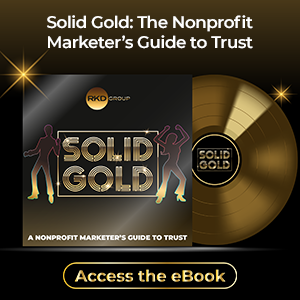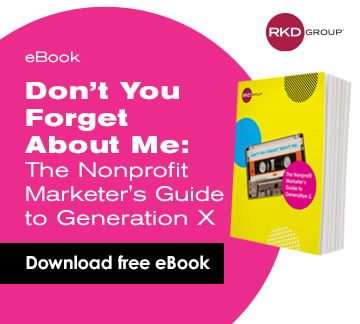We all know new donor acquisition has been a challenge. And while we see signs of acquisition stabilizing this year, it’s not the only game in town to grow your donor file.
If you’re looking for a growth strategy with high return and lower risk, it’s time to turn your attention to the donors who already believed in you once.
Lapsed donors—those who’ve given before but haven’t recently—represent one of the most overlooked and profitable opportunities in fundraising today.
Nonprofit organizations often give up on these “former” donors once they reach the 24- or 36-month mark since their last gift. But many of these donors don’t realize how much time has passed and still think of themselves as supporters. If you stop messaging them, you could be missing out on valuable revenue.
In this blog post, I’ll break down successful strategies for recapturing lapsed donors, including:
- Identifying your best lapsed prospects
- Messaging them meaningfully
- Reaching them with your appeals
- Understanding why they stopped giving
Start with the right data: Who’s worth reactivating?
Not all lapsed donors are created equal. And it’s not about how long ago they gave—it’s about how likely they are to give again.
We’ve seen success modeling lapsed files as far back as 10 years. The trick is building the right target list using key data points that predict future gifts.
Think of it like acquisition—but better.
Instead of renting lists, you’re ranking your house file by likelihood to respond. And because these donors have already said “yes” to your mission once, their response rates and average gifts tend to beat acquisition benchmarks. (Plus, there’s no list rental cost.)
Start by removing low-likelihood names, including:
- One-time donors
- Emergency-only responders
- Donors who gave during isolated events like COVID or a memorial tribute
Then, you can model based on donor behavior, channel engagement and even past responsiveness to specific campaigns.
The goal? Build your list with purpose—not nostalgia.
Match the message to the moment
Here’s where many go wrong: leading with guilt.
“We haven’t heard from you!” or “You used to give!” might feel like urgency—but to the donor, it can feel like a scolding. And, as I mentioned earlier, most lapsed donors don’t think of themselves as “lapsed.” They still like your organization. They just haven’t given recently.
We’ve found a better approach: Speak to them like you know them.
Use warm, familiar, personalized language that makes it clear they matter. Thank them. Acknowledge their past support. Make them feel like a partner not a missing puzzle piece.
And don’t forget to test! For some audiences, a light “welcome back” might be appropriate. For others, a more neutral message tied to the current campaign performs better.
Reach them where it counts
Direct mail continues to be the heavy hitter for lapsed recapture—and for good reason. It provides space to tell a compelling story, it’s easier to target, and it drives stronger performance when paired with high-resonance campaigns like matches.
But don’t stop there. Surround-sound strategies are key.
We’ve seen strong results using:
- Voice broadcasts ahead of a campaign to warm the audience
- Text messages post-campaign to say “thank you” or reinforce urgency
- Light premiums like magnets or mission-aligned seed packages (not heavy giveaways—just a meaningful nudge)
And while direct mail is still the go-to channel, there’s untapped opportunity in creating more intentional digital efforts to support your offline strategy.
Use the data you already have
Here’s a massive advantage lapsed donors have over acquisition prospects: You already know them.
You have data on which appeals they’ve responded to. You know if they’ve ever given to a match, supported a specific program or donated in multiple channels. You can even identify past core donors—those who gave for multiple consecutive years.
All of this helps you tailor your offer, your copy and your channel mix. You can also use wealth clusters, ZIP code-level insights and transactional data to build smarter ask arrays—sometimes using lower, acquisition-style asks for deeply lapsed names and donor-specific amounts for more recent ones.
Reactivate for now—retain for the future
Here’s the kicker: Recaptured donors don’t just give once and disappear again.
In fact, once they return with a gift, they’re significantly more likely to stay with you than a newly acquired donor. That second-year retention is where the gold is.
That means reactivation isn’t just a win for this quarter’s numbers—it’s also a long-term investment in your file health and donor lifetime value.
We’ve even seen mid-level and major donors return when reactivated with high-touch packages during key moments like year-end or match campaigns. Sure, the response volume may be small—but the ROI can more than cover the cost.
The bottom line
If reactivation isn’t already a line item in your budget and a regular conversation in your campaign planning, it’s time to start.
The donors you’ve lost? They’re not gone. They’re just waiting for the right moment—and the right message—to come back.






Leave a comment: